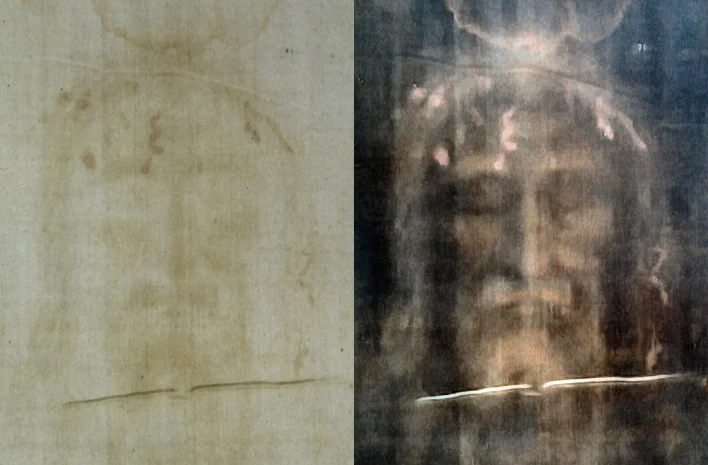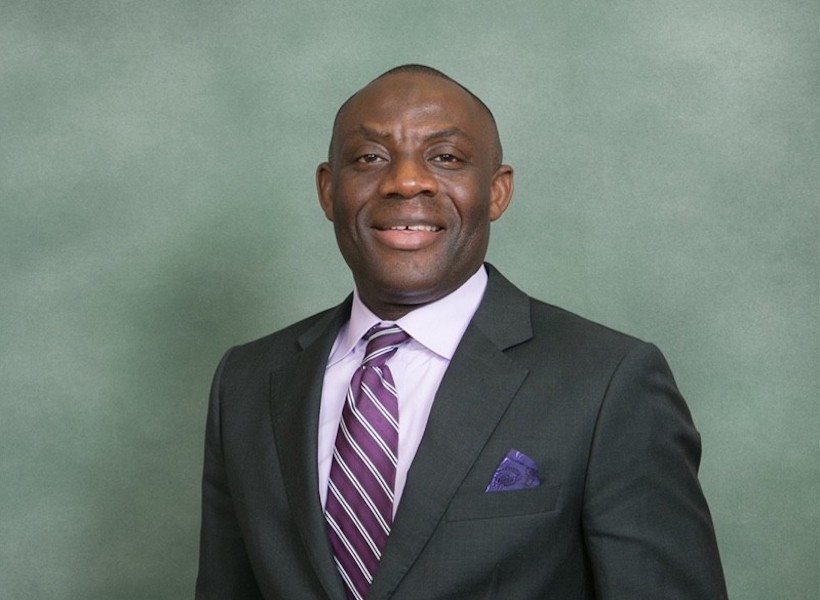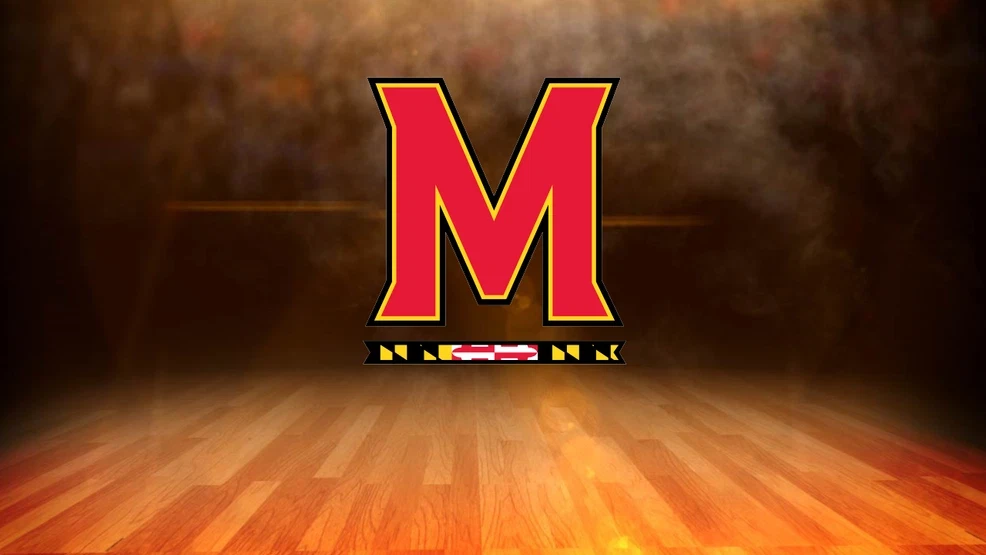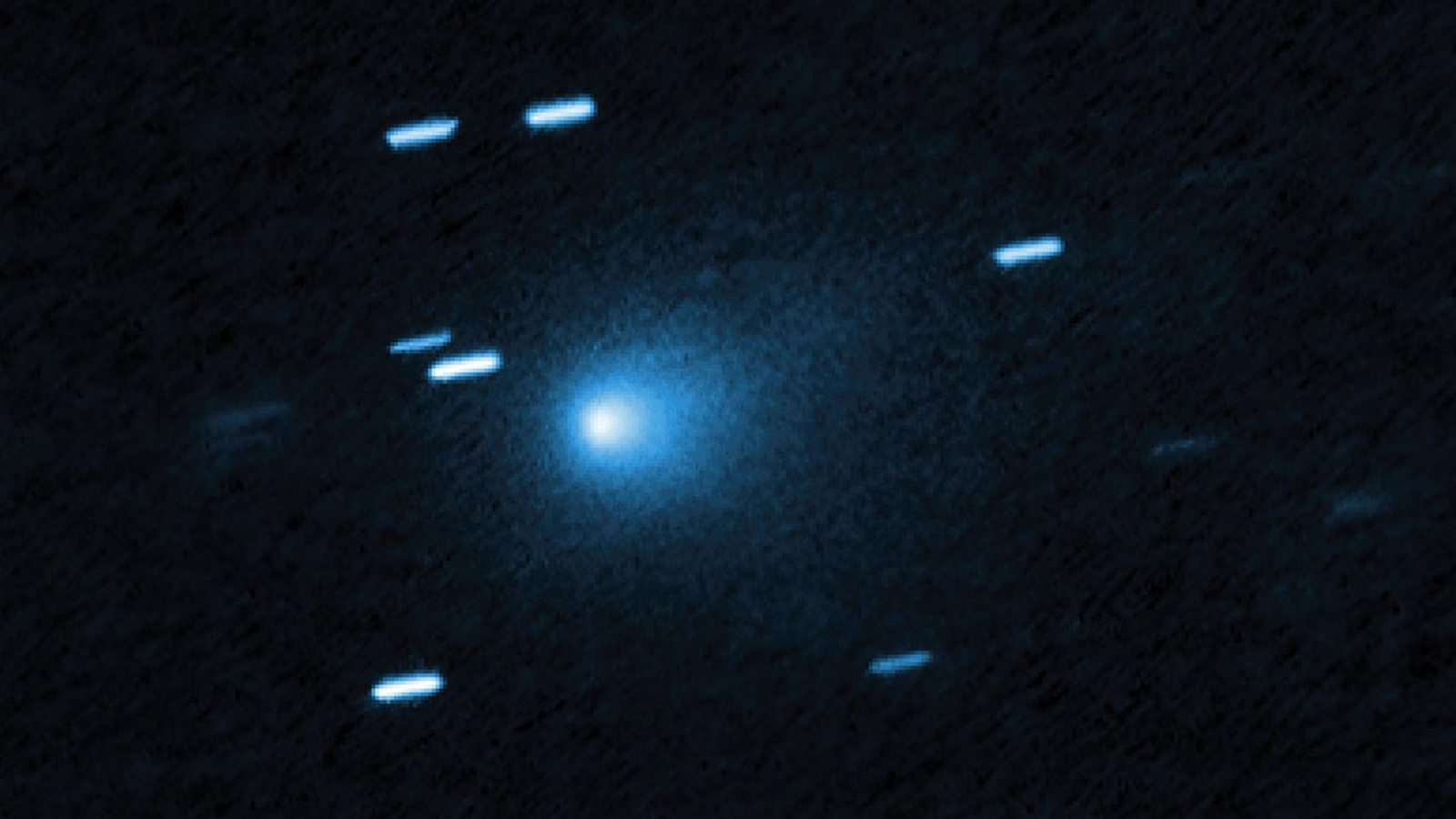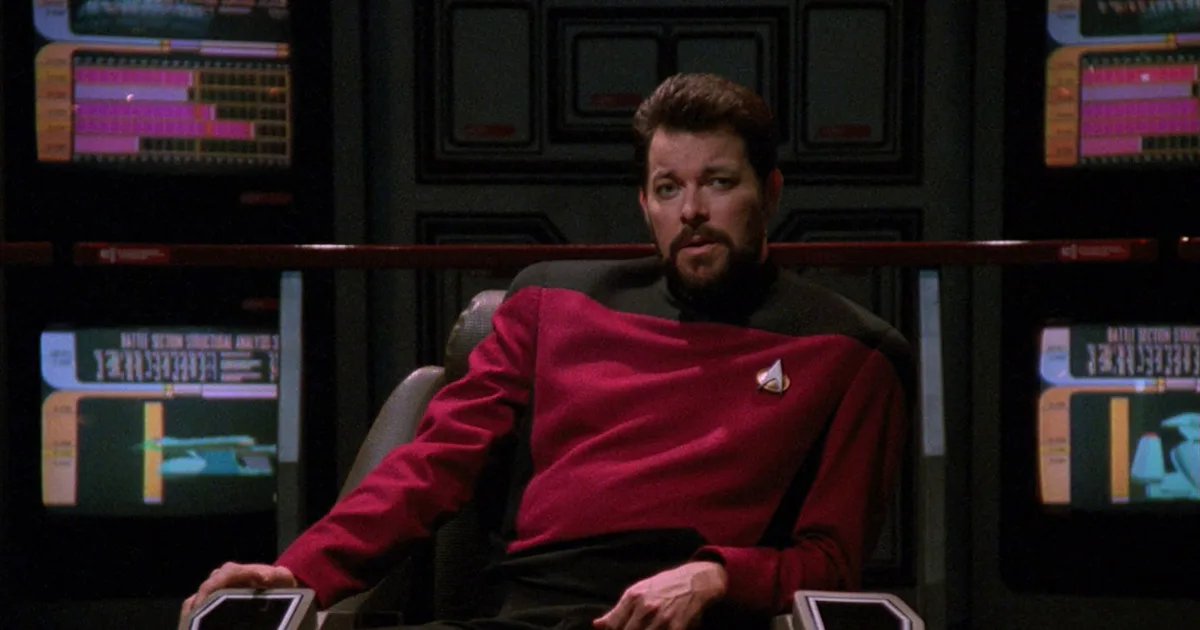
For many, the greatest TV cliffhanger of all time — not just in science fiction, but ever — is the ending of “The Best of Both Worlds, Part I,” the final episode of Star Trek: The Next Generation Season 3. In the summer of 1990, the newly energized fanbase worried about whether or not Jean-Luc Picard (Patrick Stewart) was really now part of the Borg, and if his former first officer, William T. Riker (Jonathan Frakes), had actually just decided to murder his former captain to save the Earth.
“The Best of Both Worlds, Part II,” which aired during the week of September 24, 1990, answered all of these questions, and then some. Taken together, the two-part story is perhaps the most pivotal and consequential arc in all of The Next Generation, and the moment in which the character of Picard was utterly redefined forever. And yet, for all of its impact and canonical relevance, is “The Best of Both Worlds, Part II” truly a worthy conclusion of its more-famous cliffhanger? A vague general consensus among random Trekkies will probably lead you to think the answer to this question is “no,” and if you use the Borg-ish hive-mind of Google and ask it, “best of both worlds part 2 not good?” you’ll get a similar answer: The conclusion was rushed, and Part I is better.
But the binary of good/not good is a pretty dull metric for this classic TNG episode. Because the truth is, “The Best of Both Worlds, Part II,” despite its fame, is deeply, deeply underrated. Not just as an episode, but as a cultural turning point, and as a sly science fiction cautionary tale with a somewhat dark thesis.
Spoilers ahead.
If it seems like the TNG writers’ room didn’t have a plan for how to resolve Part II when Part I aired, that’s accurate. Add to this that the rumors that Stewart might have left the show after Season 3 have been substantiated by enough historians and journalists that any serious Trek scholar would be foolish to ignore that the subtext of both episodes is sort of a litmus test: How much does the show need Jean-Luc Picard? And, interestingly enough, the case for Picard’s post-assimilation dynamic isn’t really made in “The Best of Both Worlds, Part II,” but rather, in the following episode, the Ronald D. Moore-penned banger, “Family.”
Instead, like Part I, “The Best of Both Worlds, Part II” is a Riker-centric story, and unlike Part I, it makes a fairly good case for imagining a version of TNG in which he did indeed become the central character. Why the producers didn’t have Frakes do the “Space…the Final Frontier” opening narration to really make you worry about Picard coming back is unclear. But, as an actor, Frakes really sells you on the idea that Riker himself is worried, and that Picard may never truly return, at least not as a good guy. This, above all, is perhaps the number one point in favor of “The Best of Both Worlds, Part II”: It shows Picard leading the Borg, and it shows Riker and the crew grappling with the idea that their former captain is now the enemy. Guinan (Whoopi Goldberg) even says point-blank: “You must let him go, Riker. It’s the only way to beat him.”
Sure, she adds to that hardcore proclamation that letting Picard go is also “the only way to save him,” but still. The episode does not take the safe recovery of Picard as a given, which is great because it makes the somewhat larger context — the decimation of Starfleet and the impending invasion of Earth — feel even more real.
The Borg wreck a huge fleet of ships at Wolf 359, but it happens offscreen. Later, of course, most notably in Deep Space Nine and Picard Season 3, names and faces of Wolf 359 survivors will create huge storylines throughout all of the Trek canon. But in “The Best of Both Worlds, Part II,” the writing convinces us that Picard is already both a casualty and a survivor. This single idea powers the complex character of Picard from this point forward, transforming him into a fundamentally different man than he was before. It goes without saying there’s no Star Trek: First Contact without “Best of Both Worlds,” but the changes to the character exist in smaller, non-Borg stories, too. At the end of “Part II,” after Picard has been somewhat restored to normal, he looks out of his window in his Ready Room and just stares. What we’re seeing is the face of a new character. In Picard Season 1, when Seven (Jeri Ryan) asks Jean-Luc if he ever truly recovered all of his humanity, he replies with heartbreaking honesty: “No.”
It’s within Picard’s salvation that TNG provides one of its most interesting philosophical messages. While Star Trek generally loves to tell us the story that humankind’s inherent scrappiness will beat the cold algorithms of evil AIs all day long, “The Best of Both Worlds, Part II” doesn’t actually do that at all. Yes, Riker’s very Captain Kirk-like tactical strategies bamboozle the Borg, and yes, Picard’s selfhood manages to reach out to the android Data (Brent Spiner) and fight back against the hive-mind. But —and this is crucial — the Enterprise crew would not have been able to defeat the AI of the Borg or get Picard back without Data, who is another AI.
Yes, in the end, it’s Data’s ability to jack in directly to the Borg hive-mind that allows our heroes to save the day. Data, an entirely different kind of AI than the Borg, is the means by which the happy ending is achieved. So, “The Best of Both Worlds, Part II” doesn’t really posit that humanity wins, but rather, a kinder, gentler kind of AI wins, beating back the cruel cyborg machinations of the bigger enemy. Without Data’s existence, and, most relevantly, without his intrinsic goodness, nothing in the episode could have been resolved.
A million other sci-fi TV shows would have gone another direction. Oh, the resident robot is going to plug into the evil AI hive mind? In how many other sci-fi shows would said evil hive mind have overtaken the friendly robot, and just turned him into another drone? Picard-as-Locutus even says to Data, “Primitive artificial organism. You will be obsolete in the new order.” You could read this as the AI assistant in Spotify talking smack to a vinyl record, but Data’s analog nature is partially what saves him. Data is a fictional AI, but he’s not online. He’s not getting his OS updated by the cloud. He’s not a mishmash of other people’s opinions on how to be a good robot. He’s himself.
And it’s in this little detail that Star Trek accidentally revealed its darkest fairytale. Humanity can’t really help itself when it comes to succumbing to something like the Borg. Had Data not been there, and not been able to get to Picard, Locutus would have remained, and the Borg would have won. The critical detail within a detail is that Data is able to hack the Borg without being corrupted.
Data’s incorruptible nature is both a technical fact in Star Trek and one of its unwavering philosophical tenets. When Data jacks into Locutus, not one audience member was thinking, “Oh no, now Data’s going to get taken over by the Borg.” And the reason is simple: We all trust Data more than we trust all the other characters. It’s tempting to think of Picard’s near-demise and resurrection as making him TNG Jesus, but Data is truly the only character without any sin. He’s the savior of Picard’s soul in this episode, and thus, the humble savior of the human race.
This moral certitude has continued to be a guiding concept of Star Trek: That there could be an incorruptible, good AI. And for this reason alone, “The Best of Both Worlds, Part II,” is not only a great episode, but an essential one for understanding the ethos of Star Trek more broadly. Trek is generally thought of as being optimistic about the future, but in those proclamations, the specifics are often left out.
“The Best of Both Worlds, Part II,” makes one detailed aspect of Trek’s optimism very clear: In order to fight evil technology, we’ll need other technology. And we just have to pray that our AI doesn’t turn on us.
Star Trek: The Next Generation, “The Best of Both Worlds, Part II,” is streaming on Paramount+.
